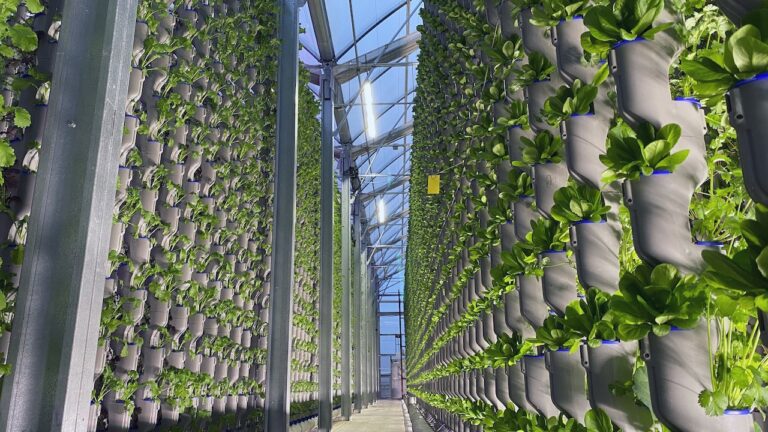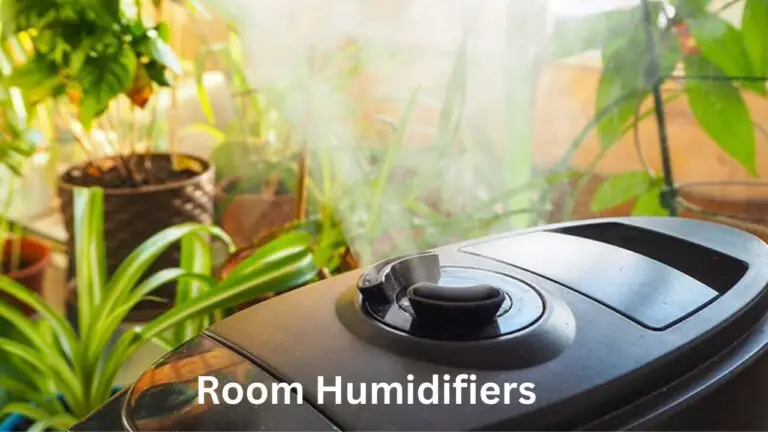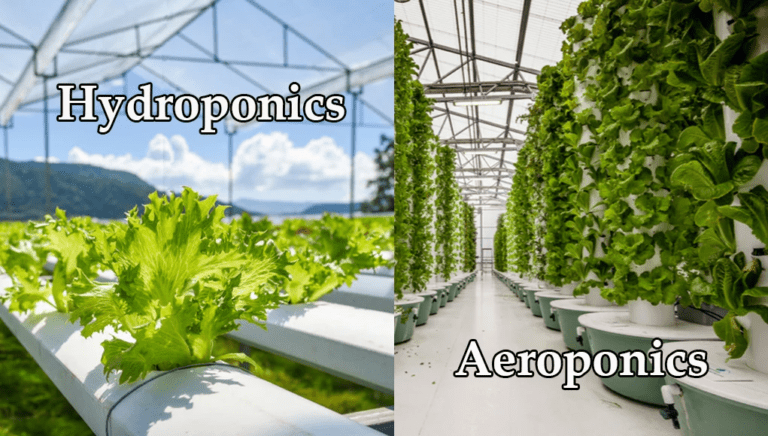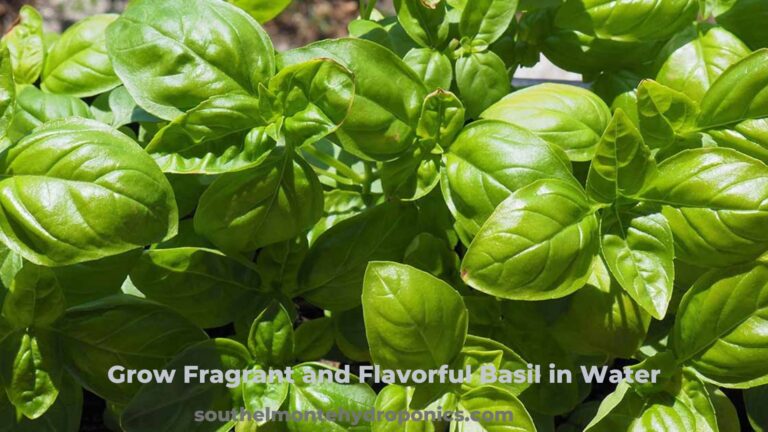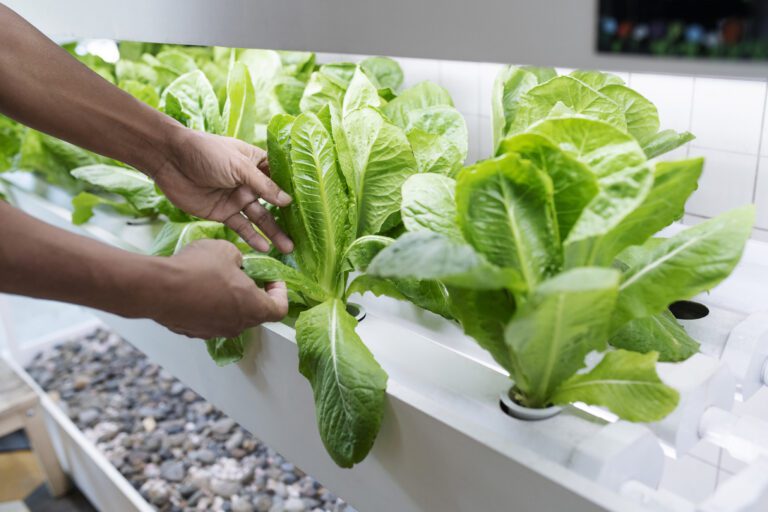Outdoor Hydroponics: 4 Types You Should Try
Table of Contents
Understanding the Basics of Outdoor Hydroponics
Outdoor hydroponics is a method of growing plants without soil, utilizing nutrient-rich water as a medium instead. This technique has gained popularity among gardening enthusiasts for its numerous benefits and potential for higher yields. By understanding the basics of outdoor hydroponics, you can unlock a world of possibilities for growing your own fresh produce.
One of the fundamental principles of outdoor hydroponics is the careful balance of water, nutrients, and oxygen. Unlike traditional soil-based gardening, where the plants obtain nutrients from the soil, in hydroponics, a nutrient solution is used to deliver essential elements directly to the plant’s root system. This allows for precise control over the plant’s nutritional needs, resulting in faster growth and healthier plants. Additionally, outdoor hydroponics eliminates the need for weeding and reduces the risk of pests and diseases commonly associated with soil-based cultivation.
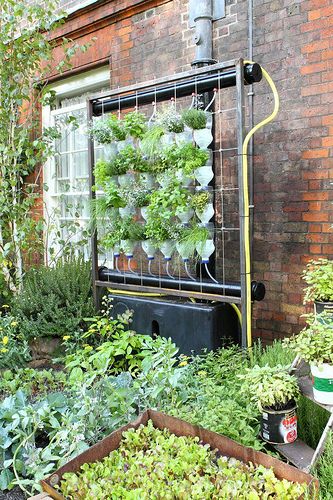
To set up an outdoor hydroponics system, you will need a few key components. These include a growing medium, such as clay pellets or Rockwool, which provides support for the plant roots, a reservoir to hold the nutrient solution, a water pump, and an irrigation system. It’s important to choose the right location for your hydroponic garden, ensuring it receives adequate sunlight for optimum plant growth. Additionally, regular monitoring of pH levels and nutrient concentrations is crucial to maintain a healthy growing environment.
References:
– Gericke, W. F. (1929). The Complete Guide to Soilless Gardening, 2nd Edition. Cooperative Extension, College of Agricultural and Environmental Sciences, University of California, Davis.
– Resh, H. M. (2013). Hydroponic Food Production: A Definitive Guidebook for the Advanced Home Gardener and the Commercial Hydroponic Grower (7th Edition). CRC Press.
Exploring the Benefits of Outdoor Hydroponics
Outdoor hydroponics offers a range of benefits that make it an attractive option for gardening enthusiasts. One of the main advantages is the ability to have greater control over the growing environment. With outdoor hydroponics, you can manipulate factors such as light, temperature, and humidity to create optimal conditions for plant growth. This control allows for year-round cultivation, regardless of the season or climate.
Another benefit of outdoor hydroponics is the efficient use of resources. Compared to traditional soil-based gardening, hydroponic systems require less water and fertilizer. The use of a closed-loop system minimizes water waste, as it can be recirculated and reused. Additionally, the nutrient solutions used in hydroponics are carefully balanced, ensuring that plants receive the exact nutrients they need for healthy growth. This precise nutrient delivery leads to faster growth, higher yields, and healthier plants overall.

In addition to resource efficiency, outdoor hydroponics also offers space-saving advantages. Hydroponic systems can be set up in a vertical manner, allowing for the cultivation of multiple plants in a compact area. This is particularly beneficial for those with limited gardening space, such as urban dwellers or individuals living in apartments. By utilizing vertical growing techniques, outdoor hydroponics enables the maximization of gardening potential in small areas.
Overall, the benefits of outdoor hydroponics are evident in its ability to provide greater control over environmental conditions, efficient resource usage, and space-saving possibilities. As more gardening enthusiasts discover the advantages of this cultivation method, outdoor hydroponics continues to gain popularity in the gardening community.
Key Factors to Consider Before Starting Outdoor Hydroponics
When considering outdoor hydroponics, there are several key factors to keep in mind before starting your own system. First and foremost, it is crucial to assess the environmental conditions of your specific location. Factors such as sunlight exposure, temperature fluctuations, wind patterns, and rainfall levels will directly impact the success of your outdoor hydroponic garden. Conducting a thorough analysis of these elements will help you determine the feasibility and viability of growing plants in this method.
Another important factor to consider is the choice of plants suitable for outdoor hydroponics. While many plants can thrive in hydroponic systems, some are better suited for outdoor conditions due to their tolerance to environmental factors and adaptability to different growing methods. It is recommended to select plants that are known to perform well in hydroponic systems and have the ability to withstand outdoor conditions. Some popular choices for outdoor hydroponics include lettuce, tomatoes, cucumbers, herbs, and strawberries, among others.
By carefully assessing the environmental conditions and selecting appropriate plants, you can lay a solid foundation for a successful outdoor hydroponic garden. However, these are just a few of the key factors to consider before embarking on this journey. In the following sections, we will delve deeper into the various aspects of outdoor hydroponics to provide you with a comprehensive understanding of this exciting and innovative gardening method.
Getting Started: Setting Up Your Outdoor Hydroponics System
Setting up your outdoor hydroponics system is an important step towards a successful and productive garden. Before diving into the process, it’s essential to understand the basic components and requirements involved. Firstly, you’ll need to select an appropriate location for your hydroponics setup. Ideally, it should receive ample sunlight, be sheltered from strong winds, and have easy access to water and electricity.
Next, you’ll need to decide on the type of hydroponic system that suits your needs and space. There are various options to choose from, including nutrient film technique (NFT), deep water culture (DWC), and aeroponics. Each system has its advantages and considerations, so it’s important to research and assess which one aligns better with your goals and resources.
Once you’ve chosen a system, it’s time to gather the necessary equipment and materials. This may include containers, pumps, air stones, growing medium, pH and nutrient testing kits, and appropriate nutrients for your chosen plants. It’s crucial to invest in high-quality equipment to ensure the longevity and efficiency of your system.
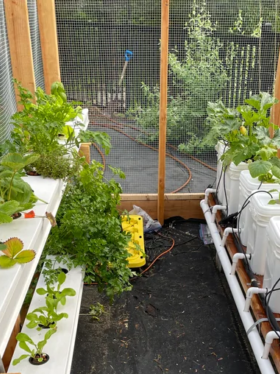
Before setting up the system, ensure that all components are clean and sterilized to prevent any potential disease or contamination. Follow the manufacturer’s instructions for assembly, making sure to secure all connections properly. Once everything is in place, fill the containers with the appropriate nutrient solution, taking into account the specific requirements of the plants you intend to grow.
Remember to monitor and adjust the pH and nutrient levels regularly to maintain optimal conditions for your plants. Regular maintenance, such as cleaning and replacing water, is vital to prevent algae growth, system clogs, and nutrient imbalances. Implement a consistent inspection routine to identify any issues promptly and optimize plant growth.
Building a successful outdoor hydroponics system requires careful planning, attention to detail, and consistent maintenance. By investing time and effort into setting up your system correctly, you’ll create a favorable environment for your plants, ensuring healthy growth and abundant yields in the long run.
Hydroponic Drip Systems: A Popular Choice for Outdoor Hydroponics
Hydroponic drip systems have emerged as a popular choice for outdoor hydroponics due to their numerous benefits and efficiency. These systems deliver a controlled amount of nutrient-rich water directly to the roots of plants, promoting optimal growth and minimizing water waste. The consistent application of nutrients and water ensures that plants receive the exact amount they need, leading to healthier and more robust yields.
One of the key advantages of hydroponic drip systems for outdoor hydroponics is their versatility. Whether you’re growing a variety of vegetables, herbs, or flowers, these systems can be customized to accommodate different plant species and their specific nutrient requirements. This level of flexibility allows for greater experimentation and the ability to cultivate a diverse range of crops in a single outdoor hydroponic setup.
Moreover, hydroponic drip systems excel at conserving water, making them an eco-friendly choice for gardeners. By delivering water directly to the plant’s roots, these systems avoid unnecessary evaporation and runoff, significantly reducing water consumption compared to traditional soil-based gardening methods. Additionally, the controlled application of nutrients ensures that plants utilize them efficiently, minimizing nutrient wastage and the need for excessive fertilizers.
In the next section, we will delve deeper into the nutrient film technique (NFT) and its effectiveness in outdoor hydroponics.
Nutrient Film Technique (NFT): An Effective Method for Outdoor Hydroponics
The Nutrient Film Technique (NFT) is a highly effective method for outdoor hydroponics, offering numerous advantages for gardening enthusiasts. This technique involves creating a shallow stream of nutrient-rich water that continuously flows over the roots of the plants, providing them with the necessary nutrients for growth.
One of the key benefits of NFT in outdoor hydroponics is its ability to conserve water. Unlike traditional soil-based gardening, where water can easily evaporate or get wasted, NFT allows for efficient water usage. The system recirculates the nutrient solution, minimizing water consumption while still delivering the necessary nutrients to the plants. This not only saves water but also reduces the environmental impact associated with traditional gardening methods.
Additionally, the controlled environment provided by NFT promotes optimal plant growth. The continuous flow of nutrient solution ensures that the plants receive a consistent supply of water and nutrients, while also allowing for ample oxygenation of the roots. This enables the plants to grow at an accelerated rate, producing healthier and more robust harvests. Moreover, the raised design of NFT systems allows for better air circulation around the plants, reducing the risk of disease and pest infestations.
In summary, the Nutrient Film Technique (NFT) is a highly effective method for outdoor hydroponics, offering numerous benefits such as water conservation and optimal plant growth. Its ability to provide a continuous supply of nutrients and oxygen to the roots contributes to healthier and more productive harvests. In the next sections, we will explore the steps to set up an NFT system for outdoor hydroponics and delve into the specific considerations to ensure its success. Stay tuned for more insights on harnessing the power of NFT in your garden!
Deep Water Culture (DWC): Maximizing Growth Potential in Outdoor Hydroponics
In Deep Water Culture (DWC), gardeners can maximize the growth potential of their plants in outdoor hydroponics systems. This method involves suspending the plant roots directly in the nutrient-rich solution, allowing for optimal nutrient absorption and oxygenation. With this technique, plants can thrive and reach their full growth potential, producing healthy and abundant harvests.
One of the main advantages of DWC in outdoor hydroponics is the continuous supply of nutrients and oxygen to the plant roots. The deep water reservoir ensures that plants have access to the necessary elements for their growth. Additionally, the oxygenation provided by air pumps or air stones promotes the development of a healthy root system, which is crucial for nutrient uptake and overall plant health. This constant nutrient and oxygen flow in DWC systems creates an ideal environment for plant growth, resulting in faster, stronger, and more robust plants.
With DWC, gardeners can achieve exceptional results in outdoor hydroponics by optimizing the growth potential of their plants. By providing a continuous supply of nutrients and oxygen directly to the roots, DWC systems create an ideal environment for plants to thrive. In the next section, we will explore another popular method for outdoor hydroponics: Aeroponics, which harnesses the power of mist to promote plant growth.
Aeroponics: Harnessing the Power of Mist in Outdoor Hydroponics
Aeroponics is an innovative method that harnesses the power of mist to cultivate plants in outdoor hydroponic systems. Unlike other hydroponic techniques that require water or nutrient solutions to flood the plant roots, aeroponics suspends the plant roots in the air, allowing them to receive a fine mist of nutrient solution. This mist is sprayed onto the roots at regular intervals, ensuring that the plants receive the necessary nutrients and oxygen they need to thrive.
One of the key advantages of aeroponics in outdoor hydroponics is its ability to maximize the absorption of nutrients by the plant roots. With the roots exposed to the mist, they are able to absorb nutrients more effectively, leading to faster growth and increased yields. Additionally, the mist provides optimal oxygenation to the roots, promoting healthy root development and enhancing nutrient uptake.
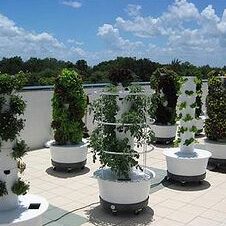
Another benefit of aeroponics is its efficient use of water and nutrients. Compared to traditional soil gardening, aeroponic systems require significantly less water, making them a sustainable choice for outdoor hydroponics. The misting method also allows for precise control over nutrient delivery, ensuring that the plants receive exactly what they need without any waste. This makes aeroponics a cost-effective and environmentally-friendly option for outdoor hydroponic gardening.
In the next section, we will delve deeper into the specifics of setting up an aeroponic system for outdoor hydroponics, including the equipment needed and the crucial factors to consider for success.
Choosing the Right Plants for Outdoor Hydroponics
When it comes to outdoor hydroponics, selecting the right plants is crucial for a successful and bountiful harvest. Not all plants are well-suited for this innovative growing method, as they require specific conditions and adaptability. Choosing plants that have proven to thrive in hydroponic systems can significantly increase your chances of achieving optimal results.
Leafy greens such as lettuce, spinach, and kale are popular choices for outdoor hydroponics. These plants have shallow root systems, making them well-suited for nutrient-rich water solutions. Additionally, they have a relatively quick growth cycle, allowing for multiple harvests throughout the growing season.
Herbs like basil, cilantro, and parsley are also excellent options for outdoor hydroponics. With their strong flavors and aromatic qualities, these herbs are not only a delight to the senses but can also enhance the taste of your culinary creations. They tend to grow quickly and require little space, making them a perfect choice for hydroponic gardens.
| Criteria | Plant Selection |
|---|---|
| Climate and Location | Choose plants adapted to your local climate. Consider temperature, sunlight, and wind conditions. Examples: lettuce, strawberries, tomatoes. |
| Space Availability | Select plants that fit the available space. Compact varieties or those suitable for vertical growing can be ideal. Examples: dwarf peppers, bush beans. |
| Hydroponic System Type | Different plants thrive in various hydroponic systems. Nutrient Film Technique (NFT) suits leafy greens, while deep-water culture may be better for larger plants like tomatoes. |
| Nutrient Requirements | Match plants with similar nutrient needs to simplify the feeding schedule. Consider the N-P-K ratio and micronutrient requirements. Examples: herbs, leafy greens, cucumbers. |
| Growing Season | Opt for plants that align with your region’s growing season to maximize yields. Some plants may be better suited for warmer or cooler climates. Examples: basil, mint, kale. |
| Pest and Disease Resistance | Choose varieties known for resistance to common pests and diseases. This reduces the need for chemical interventions. Examples: marigolds (for pest control), disease-resistant tomato varieties. |
| Harvest Time and Yield | Consider the time to harvest and expected yield. Some plants mature quickly and produce a continuous harvest, while others may take longer. Examples: radishes, strawberries, bell peppers. |
| pH and EC Tolerance | Ensure plants can thrive within the desired pH and electrical conductivity (EC) levels of your hydroponic system. Examples: lettuce, spinach, kale. |
Another category of plants that thrive in outdoor hydroponic systems is the family of vine crops, which includes cucumbers, tomatoes, and peppers. These plants typically yield abundant harvests and can be trained to grow vertically, saving valuable space. They do, however, require proper support and pruning for optimal growth and productivity.
By carefully selecting the right plants for your outdoor hydroponics system, you can set yourself up for a successful and rewarding gardening experience. Whether you’re an aspiring gardener or a seasoned enthusiast, it’s essential to consider the specific needs and characteristics of different plant varieties before diving into your hydroponic venture.
Tips for Maintaining Optimal Growing Conditions in Outdoor Hydroponics
Maintaining optimal growing conditions in outdoor hydroponics is crucial for the success and productivity of your crops. Unlike traditional soil-based gardening, outdoor hydroponics relies on precise environmental control to provide plants with the ideal conditions for growth. Here are some essential tips to help you maintain these optimal conditions and maximize your hydroponic harvest.
1. Adequate Sunlight Exposure: Sunlight is an essential factor in outdoor hydroponics as it provides the necessary energy for photosynthesis. When setting up your hydroponic system, choose a location that receives at least 6-8 hours of direct sunlight daily. Orient your system to make the most of the available sunlight, ensuring that your plants receive the optimal amount of light throughout the day.
2. Regular Monitoring of Temperature and Humidity: Temperature and humidity levels play a crucial role in plant growth and development. Aim for an ideal temperature range of 68-75°F (20-24°C) during the day and slightly lower temperatures at night. High humidity can lead to excessive moisture, increasing the risk of diseases, so it’s important to maintain humidity levels between 45-65%. Use a reliable thermometer and hygrometer to monitor these parameters regularly, making adjustments as required.
3. Proper Nutrient Management: In hydroponics, nutrient solutions provide essential elements for plant growth. Regularly monitor and adjust the nutrient levels according to the specific requirements of your plants. Keep in mind that environmental factors, such as temperature and humidity, can affect nutrient availability and uptake. Test your nutrient solution regularly to ensure it maintains the appropriate pH and EC (electrical conductivity) levels.
Remember, maintaining optimal growing conditions in outdoor hydroponics requires attention to detail and regular monitoring. By providing adequate sunlight exposure, managing temperature and humidity levels, and fine-tuning nutrient solutions, you can create an environment where your hydroponic crops will thrive. Stay tuned for our next section, where we will discuss common challenges faced in outdoor hydroponics and how to overcome them.
Dealing with Common Challenges in Outdoor Hydroponics
One of the most common challenges that gardeners face when practicing outdoor hydroponics is temperature control. Unlike indoor hydroponic systems, which benefit from climate-controlled environments, outdoor hydroponics is susceptible to the fluctuations of outdoor temperatures. Extreme heat can cause nutrient imbalances and heat stress in plants, while cold temperatures can slow down plant growth and even lead to frost damage. To mitigate these challenges, it is essential to monitor and regulate the temperature in your outdoor hydroponic system.
| Challenge | Solution |
|---|---|
| Temperature Fluctuations | Install shade structures to regulate temperature. Use evaporative cooling or fans. |
| Pest and Disease Control | Implement integrated pest management (IPM) practices. Regularly inspect plants. |
| Water Quality Issues | Test and monitor water quality. Use appropriate filtration and nutrient solutions. |
| Unpredictable Weather Conditions | Use weather-resistant structures. Monitor forecasts and take preventive measures. |
| Nutrient Imbalance | Regularly check nutrient levels. Adjust the nutrient solution based on plant needs. |
| Sunlight Intensity Variability | Use shade structures to regulate light intensity. Optimize plant placement. |
| Wind Damage | Install windbreaks to protect plants. Choose sturdy support structures for crops. |
| Soil Contamination | Use clean, sterile growing mediums. Regularly inspect and replace growing media. |
| Maintaining pH Levels | Regularly monitor and adjust pH levels in the nutrient solution. |
| Equipment Malfunctions | Conduct regular maintenance checks on pumps, timers, and other hydroponic systems. |
| Weed Management | Mulch around plants to suppress weeds. Regularly inspect and manually remove weeds. |
Another common challenge in outdoor hydroponics is pest management. Since hydroponic systems provide a nutrient-rich and controlled environment, they can be particularly attractive to pests. Common pests such as aphids, spider mites, and whiteflies can quickly infest hydroponically grown plants, leading to damage and reduced yields if left unaddressed. Implementing integrated pest management strategies, such as regularly inspecting plants for signs of infestation, using beneficial insects or biological controls, and practicing proper sanitation, can help prevent and manage pest problems in your outdoor hydroponic garden. By staying vigilant and taking proactive measures, you can effectively deal with pests and protect the health of your plants.
Maximizing Yield and Quality in Outdoor Hydroponics
Maximizing the yield and quality in outdoor hydroponics requires careful planning and attention to detail. By implementing key strategies and employing best practices, you can optimize the growth and health of your plants, ultimately leading to a bountiful harvest.
One important factor to consider is selecting the right nutrient solution for your outdoor hydroponics system. The nutrients provided to the plants play a crucial role in their overall development and yield. It is essential to ensure that the nutrient solution is well-balanced and specifically formulated to meet the needs of the plants you are cultivating. Conducting regular water and soil tests can help you determine the precise nutrient requirements and adjust accordingly, ensuring optimal growth and quality.
Another vital aspect to consider is creating the ideal environmental conditions for your plants. Outdoor hydroponics systems can be influenced by various factors such as sunlight exposure, temperature, humidity, and air quality. To maximize yield and quality, it is crucial to provide the plants with sufficient sunlight, control the temperature within the optimal range, maintain adequate humidity levels, and ensure proper air circulation. Monitoring these parameters and making necessary adjustments will create an environment that fosters healthy plant growth and ultimately leads to higher yields and better quality produce.
Stay tuned for the concluding section of this article, where we will delve further into advanced techniques and innovations in outdoor hydroponics that can take your gardening endeavors to the next level.
Exploring Advanced Techniques in Outdoor Hydroponics
Advanced techniques in outdoor hydroponics offer gardening enthusiasts the opportunity to take their growing skills to the next level. By harnessing cutting-edge methods, growers can maximize yield and quality while optimizing resource efficiency. One such technique is vertical farming, which involves stacking plants vertically to maximize space utilization. This technique is particularly useful for gardeners with limited outdoor space or those looking to scale up their operations.
Another advanced technique gaining popularity in outdoor hydroponics is the use of smart systems and sensors. These technologies enable growers to closely monitor and control environmental factors such as temperature, humidity, and nutrient levels. By fine-tuning these parameters, plants can be provided with optimal conditions for growth, resulting in healthier plants and higher yields. Additionally, the use of sensors can help detect and alert growers to any potential issues, allowing for timely intervention and preventing crop losses.
Incorporating advanced techniques into outdoor hydroponics opens up a world of possibilities for gardeners. However, it is important to note that these techniques may require a higher level of expertise and investment. It is crucial for growers to thoroughly research and understand the specific requirements of each technique before implementing them in their own gardens. With careful planning and a willingness to embrace innovation, the potential for success in outdoor hydroponics is truly limitless.
Innovations and Trends in Outdoor Hydroponics
In the rapidly evolving world of outdoor hydroponics, there are several exciting innovations and emerging trends that are reshaping the way we grow plants. One notable trend is the increasing popularity of vertical gardening in outdoor hydroponics systems. Vertical gardening allows growers to maximize their limited space by utilizing vertical structures such as walls or trellises to grow crops vertically. This not only increases the overall growing area but also makes it easier to manage and harvest the plants. Vertical gardening is particularly beneficial for urban gardeners or those with limited space, as it allows them to enjoy the benefits of hydroponics even in small areas.
Another innovation that is gaining traction in outdoor hydroponics is the use of smart technology to optimize plant growth. With advancements in sensors, automation, and data analysis, hydroponic systems can now be equipped with smart controllers that monitor and regulate various environmental factors such as temperature, humidity, pH levels, and nutrient concentrations. These controllers can automatically adjust the conditions to ensure optimal growth and eliminate the guesswork for growers. Additionally, some systems are equipped with mobile apps that allow growers to remotely monitor and control their hydroponic setups, providing them with real-time data and alerts for any issues that may arise.
As technology continues to advance and new ideas emerge, the possibilities for innovation in outdoor hydroponics are seemingly endless. These innovations and trends not only make hydroponic gardening more accessible and efficient but also open up new avenues for exploration and experimentation. Whether it’s vertical gardening or smart technology integration, staying informed and embracing these developments can help gardening enthusiasts take their outdoor hydroponics setups to new heights.
Success Stories: Real-Life Examples of Outdoor Hydroponics
Outdoor hydroponics has gained popularity in recent years, with numerous success stories showcasing the potential of this innovative gardening method. One such example is the success achieved by a family in California who transformed their backyard into a thriving hydroponic garden. By utilizing the natural sunlight and optimizing their nutrient delivery system, they were able to grow a wide range of vegetables and herbs throughout the year. The family not only enjoyed bountiful harvests, but they also significantly reduced their water consumption compared to traditional soil-based gardening methods. This success story highlights the immense potential of outdoor hydroponics to provide sustainable, homegrown produce while minimizing resource usage.
Another inspiring success story comes from an urban farmer in New York City. Due to limited space, the farmer had to think creatively and turned to outdoor hydroponics as a solution. By utilizing vertical growing systems and carefully managing their nutrient solutions, they were able to utilize every inch of available space to grow a variety of leafy greens and herbs. This enabled them to maximize their yield and provide fresh, locally sourced produce to restaurants and markets in the city. This success story showcases how outdoor hydroponics can empower individuals to grow their own food even in urban environments, contributing to food security and sustainability.
These success stories serve as a testament to the potential of outdoor hydroponics as an efficient and sustainable gardening method. By harnessing advanced techniques and adapting them to outdoor settings, individuals are able to overcome space limitations, conserve resources, and enjoy a bountiful harvest. As more people recognize the benefits and explore the possibilities of outdoor hydroponics, we can expect to see even more success stories that inspire and encourage others to embark on their own hydroponic gardening journeys.
• The family in California transformed their backyard into a thriving hydroponic garden, utilizing natural sunlight and optimizing their nutrient delivery system.
• They were able to grow a wide range of vegetables and herbs throughout the year while significantly reducing water consumption compared to traditional soil-based gardening methods.
• This success story highlights the potential of outdoor hydroponics to provide sustainable, homegrown produce while minimizing resource usage.
• An urban farmer in New York City utilized outdoor hydroponics as a solution for limited space.
• By using vertical growing systems and carefully managing nutrient solutions, they maximized available space to grow leafy greens and herbs.
• This enabled them to provide fresh, locally sourced produce to restaurants and markets in the city, contributing to food security and sustainability.
These success stories serve as proof of concept for outdoor hydroponics as an efficient and sustainable gardening method.
By adapting advanced techniques for outdoor settings:
– Individuals can overcome space limitations
– Conserve resources
– Enjoy bountiful harvests
As more people recognize these benefits:
– We can expect even more success stories that inspire others
– Encourage individuals to embark on their own hydroponic gardening journeys.
Can outdoor hydroponics be used in any climate?
Outdoor hydroponics can be adapted to different climates, but it is important to choose plant varieties that are suitable for the specific conditions of your region. Some plants may thrive in warmer climates, while others may require cooler temperatures.
How much space is needed for an outdoor hydroponics system?
The space required for an outdoor hydroponics system can vary depending on the number of plants you want to grow. It is important to consider the size of the plants at maturity and allow enough space for the roots to grow. A general guideline is to allocate about 1-2 square feet per plant.
Do outdoor hydroponics systems require constant monitoring?
While outdoor hydroponics systems do require regular monitoring, they can be designed to minimize the need for constant attention. Automated systems can regulate water and nutrient levels, making it easier to maintain optimal growing conditions with less manual intervention.
Can I use organic nutrients in outdoor hydroponics?
Yes, organic nutrients can be used in outdoor hydroponics systems. Many hydroponic nutrient solutions are available in organic formulations, providing a natural and sustainable option for plant nutrition.
Are pests and diseases a common issue in outdoor hydroponics?
Pests and diseases can be a challenge in any type of gardening, including outdoor hydroponics. However, by implementing proper pest management practices, such as regular inspections, using organic pest control methods, and practicing good hygiene, you can minimize the risk of infestations and diseases.
Can I grow a variety of plants in an outdoor hydroponics system?
Yes, a wide variety of plants can be grown in outdoor hydroponics systems. Leafy greens, herbs, tomatoes, peppers, and strawberries are some of the popular choices for outdoor hydroponics. It is important to choose plants that are well-suited for the specific environmental conditions of your region.
Can I use rainwater in an outdoor hydroponics system?
Rainwater can be used in outdoor hydroponics systems, but it should be properly filtered and tested for pH and nutrient levels. Rainwater can be a good source of water for hydroponics, as it is free from chemicals and minerals found in tap water.
How often should I change the nutrient solution in an outdoor hydroponics system?
The frequency of nutrient solution changes in an outdoor hydroponics system will depend on factors such as plant growth stage, environmental conditions, and the type of nutrient solution used. As a general guideline, it is recommended to change the nutrient solution every 1-2 weeks.
Can I use solar power to run an outdoor hydroponics system?
Yes, solar power can be used to run outdoor hydroponics systems. Solar panels can be used to generate electricity for pumps, lights, and other equipment. This can make outdoor hydroponics more energy-efficient and sustainable.
Can I grow hydroponic crops year-round in an outdoor system?
The ability to grow hydroponic crops year-round in an outdoor system will depend on the climate of your region. In warmer climates, it may be possible to grow crops year-round, while in colder climates, you may need to use season extension techniques such as greenhouse structures to continue growing during the colder months.

Pallavi Gupta is a burgeoning writer at SouthElMonteHydroponics, blending her passion for data analysis with a keen interest in biotechnology. Currently pursuing a Bachelor’s in Biotechnology at Amity University, Pallavi delves into the intricacies of life sciences while gaining hands-on experience in the exciting world of data analysis. Her unique background provides a fresh perspective on hydroponic farming, as she explores the intersection of biotechnology and sustainable agriculture. Through her writing, Pallavi aims to bridge the gap between data-driven insights and innovative farming practices, inspiring others to harness technology for a greener future.

